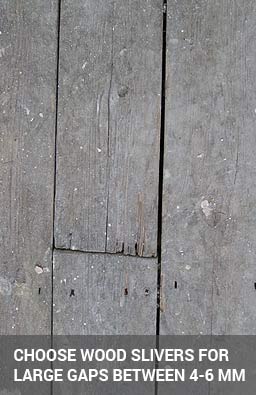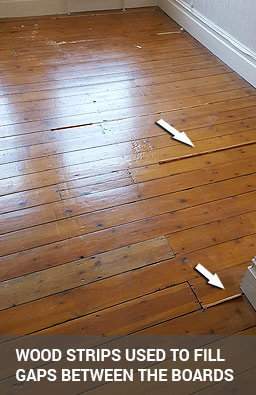Gap Filling With Wood Slivers

Properly addressing gaps between floorboards is an essential aspect of maintaining the overall integrity and longevity of your wood floors. These gaps occur naturally as a result of the wood's inherent tendency to expand and contract with changes in temperature and humidity. While these gaps may seem insignificant at first, they can have significant implications for both the visual appeal and functional aspects of your flooring.
From an aesthetic perspective, unfilled gaps can disrupt the seamless look and feel of your wood floors. They create an uneven surface and may accumulate dust and debris over time, detracting from the overall beauty of the space. By effectively filling these gaps, you can restore the floor's visual harmony, providing a more polished and refined appearance.
Exploring Gap Filling Technique
Gap filling offers various methods, but one popular option is utilising wood slivers. While alternatives like filler resin or sawdust mixed with resin exist, we'll focus exclusively on the wood sliver method. Wood slivers can be purchased or created on your own. Other methods, such as papier mache, PVA glue, and sawdust, are not discussed here.
Why Gap Filling Is Important?
Gap filling is not simply about improving the look of your wooden floor, but is also an effective way to deal with draughts. Most of the houses in the UK have air bricks at ground level and allow constant air movement below your floor. Filling the floor gaps will ensure that the warm air stays in your house during the winter and save you a lot of money on heating bills. In addition to all of this, gap filling will not only increase the overall stability of your wooden floor but also improve its appearance. In the end, gap filling is not just a cosmetic procedure but a welcome and practical solution.
The Benefits and Downsides of Strip Filling
Wood slivers are particularly effective for larger gaps, typically around 4-6mm wide. Unlike resin, wood slivers provide a permanent solution, avoiding issues like cracking or detachment. However, it's important to note that slivers may occasionally split. To minimise this, consider using reclaimed wood slivers. Keep in mind that wood sliver gap filling may be slightly more expensive and time-consuming compared to resin filling, but offers superior durability.
The Process of Gap Filling With Wood Slivers
To fill gaps between floorboards using wood slivers, follow these steps:
-
Select appropriate wood slivers: Reclaimed pine slivers are ideal for their suitable properties.
-
Determine sliver size: Ensure the slivers are slightly larger than the gaps between floorboards and of similar depth.
-
Apply adhesive: Apply a wood glue of your choice to the sides of the floorboards where the slivers will be inserted.
-
Insert the slivers: Gently tap the slivers into the gaps using a soft mallet or hammer. Repeat until all gaps are filled.
-
Allow drying time: Allow the adhesive to dry for approximately an hour, ensuring a secure bond.
-
Sand the surface: Conduct a fine floor sanding after the gap filling process to achieve a smooth, level surface.
We recommend consulting with an experienced specialist for precise execution and personalised advice tailored to your specific floor. By employing effective gap filling techniques, including wood slivers, you can effectively fill gaps in floorboards, enhance the durability of your floors, and create a more comfortable living environment.
Frequently Asked Questions About Gap Filling With Wood Slivers
What is wood sliver gap filling?
This method involves inserting thin strips of real wood (slivers) into larger gaps between floorboards. Once glued and sanded, the slivers become a permanent part of the floor.
When is wood sliver gap filling better than resin?
Wood slivers are best for larger or recurring gaps, especially in older floors where boards naturally move. Unlike resin, slivers expand and contract with the floor, making them a longer-lasting solution.
Will the new wood slivers match my existing floor?
Yes — we use matching timber species whenever possible. After sanding and finishing, the slivers blend in naturally with the surrounding boards.
Does gap filling with wood slivers stop draughts?
Yes — once installed, slivers close up larger gaps, reducing draughts and helping to insulate your home, particularly in period properties with original floors.
How durable is this type of gap filling?
Wood slivers provide a highly durable and stable repair. Because they are solid timber, they last as long as the rest of the floor when properly installed and maintained.
How long does the process take?
Fitting wood slivers usually adds a few extra hours to the sanding process, depending on the number of gaps. The floor can still be sanded and finished within the same project timeframe.